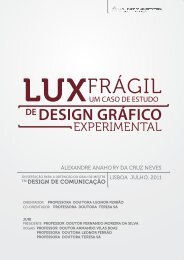Frost Protection - UTL Repository
Frost Protection - UTL Repository
Frost Protection - UTL Repository
You also want an ePaper? Increase the reach of your titles
YUMPU automatically turns print PDFs into web optimized ePapers that Google loves.
F R O S T P R O T E C T I O N : F U N D A M E N T A L S , P R A C T I C E A N D E C O N O M I C S<br />
2]<br />
[<br />
FREEZE AND FROST DEFINITIONS<br />
Technically, the word “frost” refers to the formation of ice crystals on surfaces,<br />
either by freezing of dew or a phase change from vapour to ice (Blanc et al., 1963;<br />
Bettencourt, 1980; Mota, 1981; Cunha, 1982); however, the word is widely used<br />
by the public to describe a meteorological event when crops and other plants<br />
experience freezing injury. Growers often use the terms “frost” and “freeze”<br />
interchangeably, with the vague definition being “an air temperature less than or<br />
equal to 0 °C”. Examples of frost definitions in the literature include:<br />
the occurrence of a temperature less than or equal to 0 °C measured in<br />
a “Stevenson-screen” shelter at a height between 1.25 and 2.0 m<br />
(Hogg, 1950, 1971; Lawrence, 1952);<br />
the occurrence of an air temperature less than 0 °C, without defining the<br />
shelter type and height (Raposo, 1967; Hewett, 1971);<br />
when the surface temperature drops below 0 °C (Cunha, 1952); and the<br />
existence of a low air temperature that causes damage or death to the plants,<br />
without reference to ice formation (Ventskevich, 1958; Vitkevich, 1960).<br />
Snyder, Paw U and Thompson (1987) and Kalma et al. (1992) have defined frost<br />
as falling into two categories: “advective” and “radiative”. Advective frosts are<br />
associated with large-scale incursions of cold air with a well-mixed, windy<br />
atmosphere and a temperature that is often subzero, even during the daytime<br />
(Table 1.1). Radiative frosts are associated with cooling due to energy loss through<br />
radiant exchange during clear, calm nights, and with temperature inversions (i.e.<br />
temperature increases with height). In some cases, a combination of both advective<br />
and radiative conditions will occur. For example, it is not uncommon to have<br />
advective conditions bring a cold air mass into a region, resulting in an advection<br />
frost. This may be followed by several days of clear, calm conditions that are<br />
conducive to radiation frosts. In addition, the authors have observed conditions<br />
that are considered as “micro-scale-advection frosts”. These occur when the region<br />
is exposed to radiation-type frost conditions, but local cold air drainage leads to<br />
rapid drops in temperature on a small scale within the radiation frost area.<br />
TABLE 1.1<br />
<strong>Frost</strong> event terminology and typical characteristics<br />
FROST TYPE<br />
Radiation<br />
Advection<br />
CHARACTERISTICS<br />
Clear; calm; inversion; temperature greater than 0 °C during day<br />
Windy; no inversion; temperature can be less than 0 °C during day


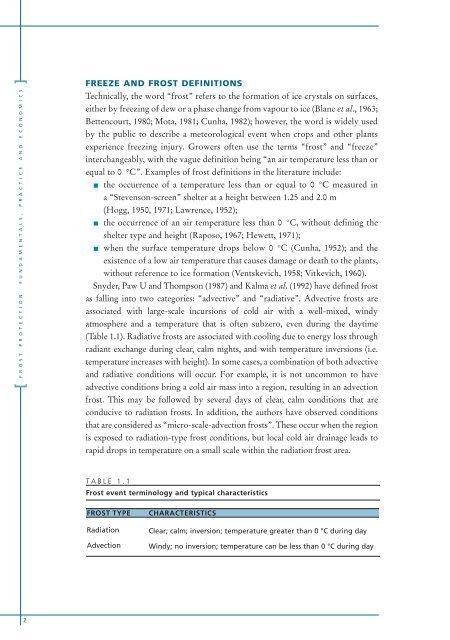
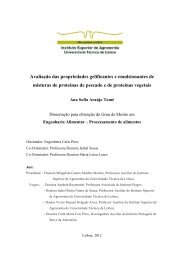
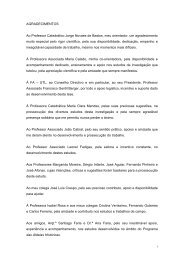
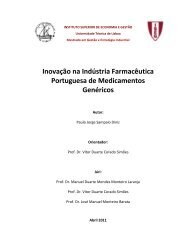
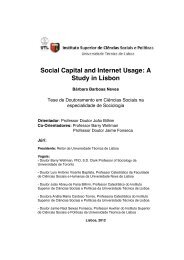
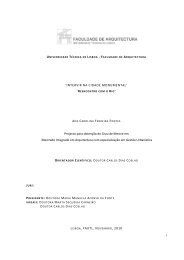
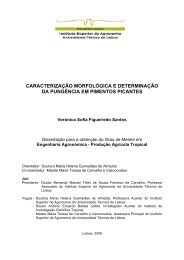

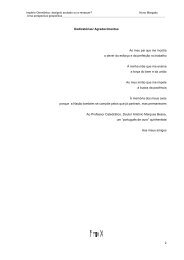
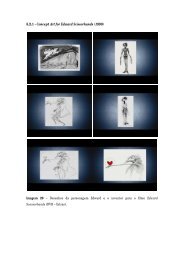
![Tese - Es..[1].pdf - UTL Repository - Universidade Técnica de Lisboa](https://img.yumpu.com/25707135/1/184x260/tese-es1pdf-utl-repository-universidade-taccnica-de-lisboa.jpg?quality=85)

